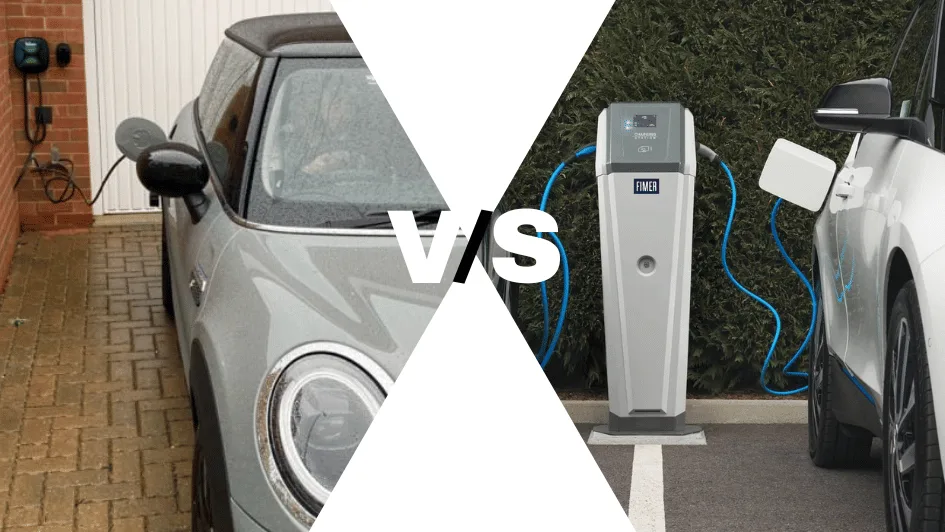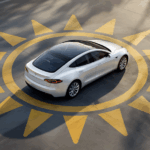Smart charging choices begin at home—but being strategic on the road can save you hundreds annually.
Find out which charging option saves you more in 2025 and why convenience is only part of the equation.
As electric vehicles (EVs) continue to gain momentum in the U.S. auto market, understanding the true cost of charging an EV has become as important as knowing a car’s range or battery size. With more than 3.5 million EVs on American roads as of early 2025, the debate between home charging and public charging stations isn’t just about convenience—it’s about economics, reliability, and long-term ownership strategy.
For U.S. EV owners and shoppers, the question of where to charge goes beyond simple preference. It has financial consequences that affect monthly budgets, resale value, and overall vehicle satisfaction. Below, we break down charging costs, equipment needs, hidden fees, and more—so you know exactly what you’re getting into.
Home EV charging: Upfront investment, long-term savings
Installing a Level 2 home charging station is the most common solution for EV owners with a garage or dedicated parking. These systems operate at 240 volts and significantly reduce charging time compared to standard wall outlets.
Typical installation costs in 2025 range from $900 to $1,600, depending on your home’s electrical infrastructure. However, federal incentives and state-level rebates can lower that cost by up to 30% in many regions. Most Level 2 chargers themselves cost between $350 and $750.
Average home charging costs:
In 2025, the average residential electricity rate in the U.S. sits at 15.4 cents per kilowatt-hour (kWh). For a popular EV like the Tesla Model Y Long Range (starting at $48,990), which consumes around 28 kWh per 100 miles, a full 300-mile charge costs approximately $13 at home. That translates to $0.043 per mile—substantially lower than gas or most public options.
Public EV charging: Accessible, but variable in cost
Public charging stations offer flexibility, especially for those without home access. But with convenience comes complexity.
There are three types of public chargers in 2025:
-
Level 2 public chargers (typically free or $0.15–$0.35/kWh)
-
DC fast chargers (Level 3): Widely available and fast, but pricey—ranging from $0.36 to $0.65/kWh
-
Tesla Superchargers: Exclusive to Tesla models unless adapters are used; average around $0.41/kWh
Using the same Tesla Model Y example, a full charge at a DC fast charger could cost between $30 and $50, or $0.10–$0.17 per mile—up to three times more expensive than charging at home.
Other factors to consider:
-
Idle fees (charged for leaving your EV plugged in after it’s fully charged) average $0.50 to $1.00 per minute at busy stations.
-
Network memberships (like Electrify America or EVgo) can lower per-kWh rates but often require monthly fees of $4 to $8.
-
Charging in urban cores or along highways typically incurs higher rates due to demand and land use costs.
Cost comparison by vehicle
Let’s examine the cost breakdown across different EVs:
| EV Model | MSRP | Battery Size (kWh) | Home Full Charge | Public Full Charge (Avg) |
|---|---|---|---|---|
| Tesla Model Y Long Range | $48,990 | 81 | ~$13 | ~$35 |
| Ford Mustang Mach-E Premium | $46,995 | 91 | ~$14 | ~$38 |
| Hyundai Ioniq 5 SEL | $45,700 | 77.4 | ~$12 | ~$32 |
| Chevrolet Blazer EV RS | $52,900 | 85 | ~$13 | ~$36 |
As shown, home charging consistently costs less, even for larger batteries. The price gap widens with frequent use of DC fast chargers or when living in high-cost electricity markets like California or New York.
Time efficiency vs. cost efficiency
DC fast charging can add 100+ miles of range in under 20 minutes, making it indispensable for long trips. However, daily use of fast chargers is both financially unsustainable and potentially harmful to battery health, particularly over time. Manufacturers often recommend limiting fast charging to preserve battery longevity.
Home charging, on the other hand, allows overnight replenishment. Plug in, sleep, and wake up to a full charge—no lines, no wait, no app juggling.
Infrastructure growth and the future of EV charging
In 2025, over 190,000 public charging ports are active across the U.S., with federal programs pushing to exceed 500,000 by 2027. Still, the rollout remains uneven—urban hubs see dense infrastructure, while rural regions lag, making home charging even more vital outside major metro areas.
Key takeaways for EV owners
-
Home charging is the most economical option for most drivers, especially over long-term ownership.
-
Public charging offers essential flexibility but at a higher cost—ideal for emergencies or road trips.
-
Installing a Level 2 charger pays off within the first two years for average drivers, especially with incentives.
-
Fast charging should be used sparingly to protect battery health and reduce charging expenses.
For those considering an EV or navigating ownership, aligning your charging habits with your driving patterns and lifestyle can make a significant difference in the overall cost of electric mobility.


